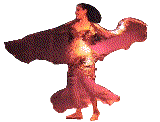|
|
|
Quote of the day
A person without a History is like a person lost in the wilderness |
The New World People
At the Congress of Angostura in 1819, liberator Simon
Bolivar elected president of Venezuela, planned
a strategy that would free the Americas of European
domination.
He also found it necessary to clarify America’s
racial heritage: “”It is impossible to say
to which human family we belong.
The larger part of the
Native population has disappeared, Europeans have mixed
with the Indians and the Negroes, and Negroes have mixed
with the Indians.
We were all born of one mother America,
though our fathers had different origins, and we all
have differently colored skins. This dissimilarity is
of the greatest significance.”
The
1920s estimate that a third of African Americans have
Indian blood requires new research. Today just about
every African-Americanfamily tree has an Indian branch.
| |
Garcilaso de la Vega, "The Inca,"
writing in the early 1600's, tells us: "The name was invented
by the Negroes... They use it to mean a Negro born in the Indies,
and they devised it to distiguish those who come from this side
and were born in Guinea from those born in the New World....
The Spanish copied them by introducing this word
to describe those born in the New World, and in this way both
Spaniards and Guinea Negroes are called criollo if they were born in the NewWorld."
Recent scholarship has
determined that this Spanish adoption of black usage dates
from the 1560's, before which time the "word creole applied....
exclusively to Negroes."
Later practice in the Spanish
empire seems to have been variable, with most South American creoles eventually fixing on purity of white blood as a mark
of their kind, while in other areas, particularly the Caribbean
islands, the distinction continued to apply to all those indigenous
to the religious regardless of race."
Garcilaso
de la Vega
Royal Commentaries of the Incas (2 vols.; Austin, 1966) |
The Atlantic Creole
more on Our Origins
The term Creole
(Spanish -- Criollo) was introduced in 1590. It derived from
the Latin word “crear”, which meant, “create.”
In 1590, Father J. de Acosta decided that the mixed breeds
born in the New World were neither Spanish, African, Indian,
but various mixtures of all three, thus a created race.
So he identified them as "Criollos"
At that time, and for approximately
250 years afterwards, the word Creole, for the most part,
only signified that a person was born in the new World. And it did not refer to color or race. For a time, in the Catholic
colonies the term Mulatto was predominate because there were
no white women to produce unmixed white offsprings.
Eventually, the Creole identity
made its way to Jamaica as testified by Rev. James Ramsey
in 1788. Ramsey wrote, “In every case within my knowledge,
the farther back the Negro could trace his Creolism, the more
he valued himself, the more he was valued.”
Also, it
was reported by J.A. Rogers that some time during the eighteenth
century, blacks from South America began to apply the term
Creole to their children born in America, in order to distinguish
them from slaves freshly imported from Africa. And like the
term Mulatto, the term Creole evolved through succeeding generations
and became a term for racial identity.
|
Too White to be Black Too Black to be White |
Creole
Chronology ©1994 (Permission granted)
by Gilbert E. Martin
|
The term Mulatto
originally applied to aperson whose parents were of distinctively
different races.
In this
work Indians are considered as being different from Caucasians
and Africans. Thousands of the New World mixed breeds were
of African-Indian extractions. The Mulattoes in the West Indies
extended the term beyond the first generation of half breeds
by applying the term to their own offsprings.
Consequently, as the term was extended from generation to
generation, it applied to any person of mixed ancestry. And
by the open and continued use of the term in the latter sense,
a Mulatto race evolved on Hispaniola,
the Mulatto race grew
into a separate nation. And resulting from the Haitian revolution,
which began in August of 1791, Haiti’s Mulatto nation,
in conjunction with its counterparts from Martinique and Guadeloupe,
bolstered and fortified the Creole nation already developed
in Louisiana.
Occasionally, other Mulatto types from Santo
Domingo, Cuba, and Jamaica became parts of the melting pot;
the only real melting pot the United States ever had.
|
Creole
Chronology ©1994 (Permission granted)
by Gilbert E. Martin |
Good links
The ancestors
of today's Cajuns were French pioneers who settled in Nova
Scotia (Canada) mainly in 1604 and 1632.
The character
and strength of the Cajun people today has its roots in their
expience as colonists in the Acadia province of Nova Scotia,
where they arrived at the beginning of a conflict between
the British and the French that was to stretch into nearly
a hundred years of war) In 1713, when Acadia was formally
ceded to England in the Treaty of Utrecht,
the British answered
the colonists' pleas forneutrality with a deman for allegience
to the British Crown. The demand became an ultimatum in 1753;
the French Acadians would either take an unconditional oath
of allegience of face confiscation of property and deportation
to teh British colonies.
In what has been called teh Grand Derangement of 1755, 16,000
French Acadians who had built a life in Nove Scotia for over
a century were separated and scattered throughout the British
colonies, where some were pressed int servitude. The greatest
numbers eventually found their way to South Louisiana, where
they again became pioneers in new and unsettled lands.
Ironically,
then the Acadians began to arrive in Louisiana, the colony
had just come under Spanish rule and they were again the subjects
of a non-french crown. The Spanish government in New Orleans
saw an opportunity to settle the area west of the Mississippi
and offered Acadian and other immigrants of French descent
a choice of lands on the frontier
. The first settlers made
homes on high lands along the "German Coast" of
the Mississippi River, and then along bayous in the Lafourche,
Teche, and Opelousas districts.
|
Source "Cajun Creole Guide" |
|
|
 |
 |
|

